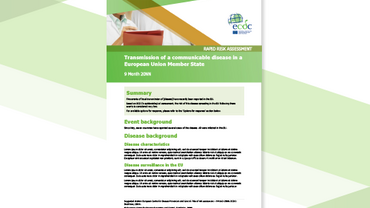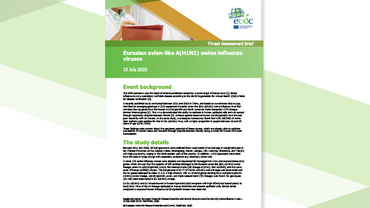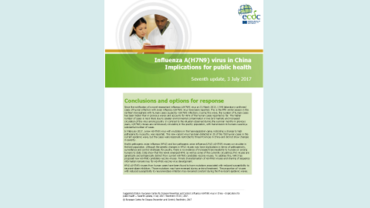Rapid risk assessment: human infection with avian influenza A(H5N1) virus, Egypt, 23 December 2014
According to a WHO update published on 4 December 2014, eight new human cases of influenza A(H5N1) have been reported in Egypt, with onset of disease in November 2014, bringing the total for 2014 to 12. Influenza A(H5N1) has been circulating in domestic poultry in Egypt since 2006 and has been the source of sporadic human infections. As the affected regions are non-touristic areas, the risk for EU citizens is considered extremely low.
Executive Summary
Avian influenza A(H5N1) has been circulating in Egypt since its introduction in 2006 and has been the source of sporadic human infections. The number of cases reported in Egypt for 2014 (12) is higher than last year but at similar levels as 2012. Given this increase, and that eight cases by date of onset were reported in November, ECDC has assessed the potential changes in the risk to public health in the EU/EEA and to European citizens in a new rapid risk assessment. The current risk status of this epidemic remains unchanged. In addition, considering the circulation of the virus is in areas which are not very popular as tourist destinations, the risk of EU citizens in Egypt being infected is extremely low. The total number of human cases due to A(H5N1) is decreasing; 2014 had the lowest number of cases reported since the first cases in 2003 . The most affected countries cumulatively are Indonesia and Egypt, and Egypt and Cambodia reported most cases in 2014. Human infections remain rare and these influenza A(H5N1) viruses do not currently appear to transmit easily among people.







